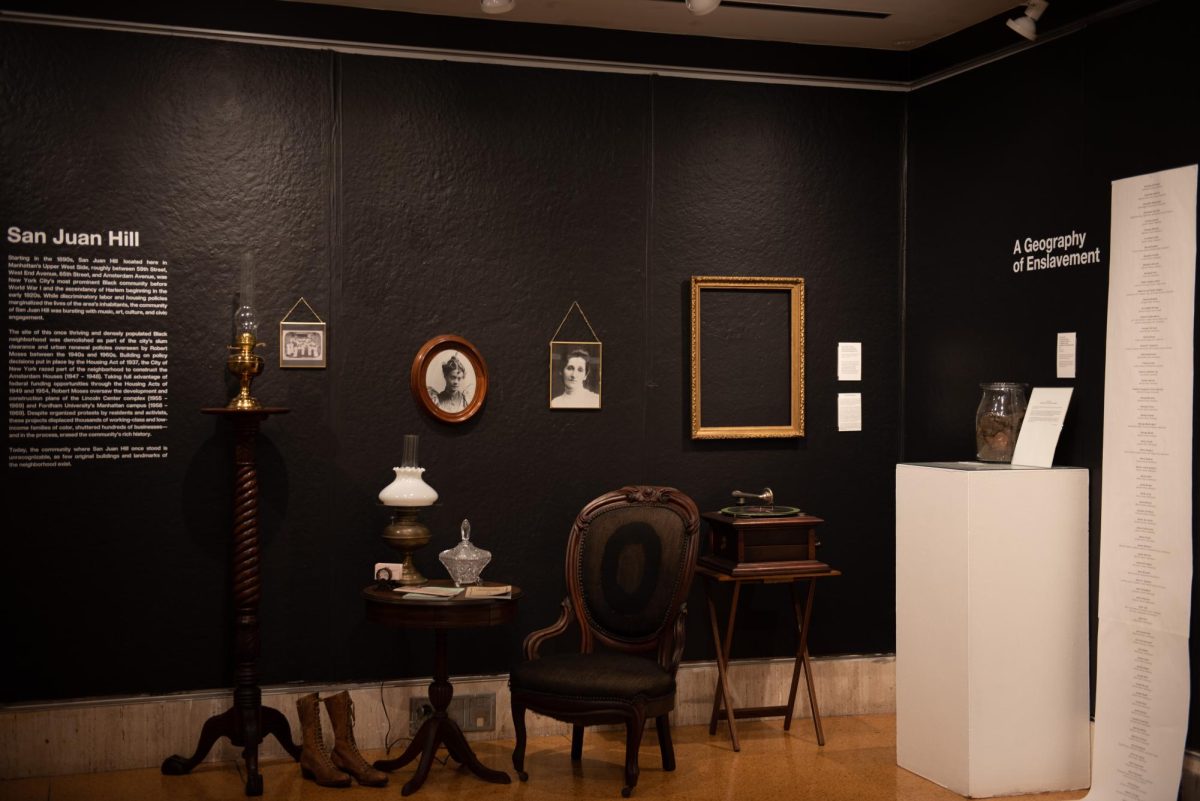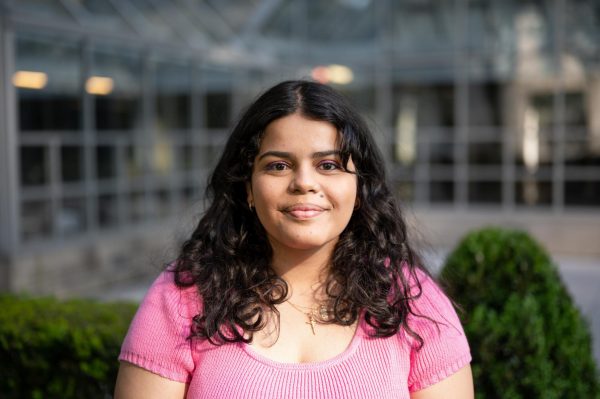Fordham Lincoln Center’s Ildiko Butler Gallery has been displaying “ERASED//Geographies of Black Displacement” since June 19, an exhibit that seeks to explore “geographies of Black displacement, dislocation, containment, and disposability in land-use planning, housing policies, and urban development.” The exhibit features over 60 works from abolitionist, activist and artist Shana M. griffin.
According to the press release for the exhibition, these pieces “examine the multiple ways displacement takes place, how it shapes Black life, and how sites of displacement become ones of everyday violence, subjectivity, resistance, and possibility.”
Alongside photographs and cartographies of plantations and urban planning, griffin included a wide variety of archives in the exhibit, emphasizing the insidious nature of displacement and dislocation.
The exhibition destabilizes history’s perceived linearity and suggests that, perhaps, the distant and the past are intimately intertwined with our present, immediate reality.
“The consequences of racial slavery and conquest,” a plaque at the front of the gallery posits, are not limited to those which are obvious and direct. Rather, these consequences are also “executed through the carceral spaces of slave ships, auction blocks, plantations arrangements, architectural violence, confinement.”
Arguably the centerpiece of the exhibit, placed along the back wall, is a shelving unit filled with jars of dirt, each bearing the name of a plantation across the southern U.S. These containers highlight the mundane nature of displacement and violence as well as draw a parallel between the U.S.’s brutal history of enslavement and New York City’s contemporary state of gentrification. From nondescript city planning buildings to everyday dirt, violence in its most insidious forms can take place far from Avengers-style battlefields.
In drawing a parallel between the U.S.’s violent history of enslavement and New York City’s contemporary state of gentrification and displacement, griffin effectively connects the past with the present and the broad with the particular: While institutionalized slavery has fallen away, Black people remain incarcerated at five times the rate of white people. The exhibition destabilizes history’s perceived linearity and suggests that, perhaps, the distant and the past are intimately intertwined with our present, immediate reality: The consequences of an event in 19th-century Louisiana continue to reverberate in 21st-century New York City.
The press release for the exhibition noted that “ERASED//Geographies of Black Displacement” was funded by a Teaching Race Across the Curriculum grant offered by the Office of the Chief Diversity Officer at Fordham University. The grant, which was developed as part of the university’s June 2020 anti-racism action plan, seeks to “support departmental efforts to thoughtfully and intentionally integrate questions of race into their curricula” and “support excellence in the teaching of topics related to race in the curriculum.”
“My class is about storytelling, and storytelling is best done when it’s buttressed by a deep understanding of how we got to where we are,” Casey Ruble, associate clinical professor of visual arts at Fordham Lincoln Center
Casey Ruble, associate clinical professor of visual arts at Fordham Lincoln Center, applied for the grant in order to mount an exhibition in the Butler gallery because “everyone who enters the school sees the show in the gallery as they walk past,” and she felt that the gallery was uniquely suited to expose the entire community to teaching on race.
Ruble chose to invite griffin to create the exhibition after encountering her 2021 exhibition titled “Displacing Blackness,” which was mounted at the Contemporary Art Center in New Orleans. She shared that she saw griffin’s show to be a fantastic and educational exhibit, as it told the story of Black displacement in many different ways — some were poetic and emotional and others were more straightforward and academic.
“In other words, the works allowed for multiple points of entry and could speak to a wide range of people, including those outside the art world,” Ruble said. “I contacted griffin and we began discussions about mounting a similar show here at Fordham.”
Throughout the 2022-23 academic year, griffin made visits to Fordham Lincoln Center, during which time she collaborated with students in Ruble’s class titled “Visual Justice: Using Image-Based Storytelling to Enact Change.” During these sessions, students uncovered documents and other ephemera which were then incorporated into griffin’s exhibition.
“My class is about storytelling, and storytelling is best done when it’s buttressed by a deep understanding of how we got to where we are, even if little or none of the details of that background end up in the story that ultimately gets told,” Ruble explained. “Things that wind up on the cutting floor still frame how we describe everything that doesn’t.”
“ERASED//Geographies of Black Displacement will run until Oct. 30 in the Ildiko Butler Gallery.



